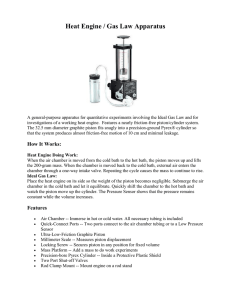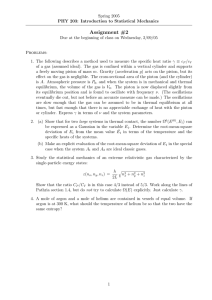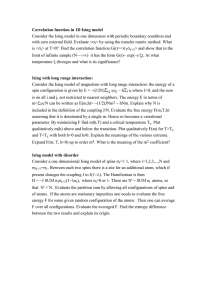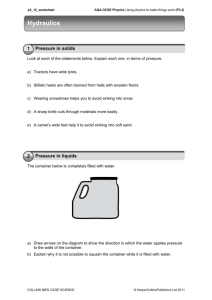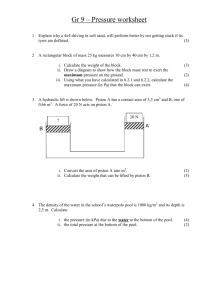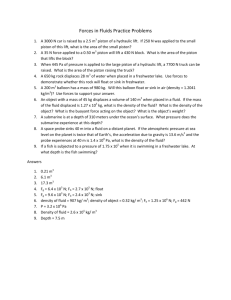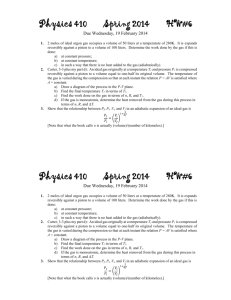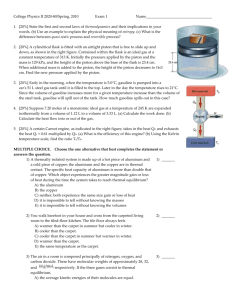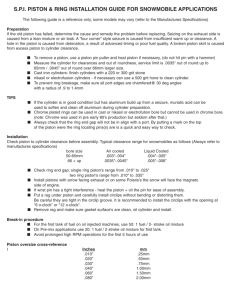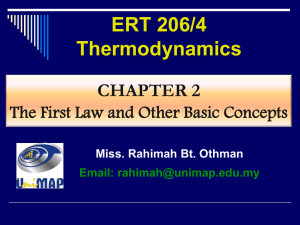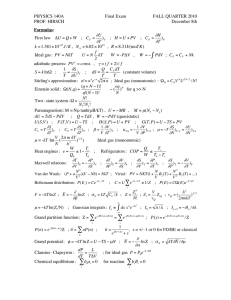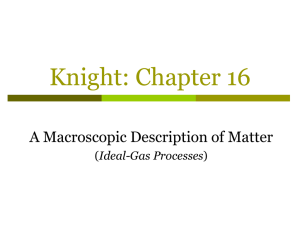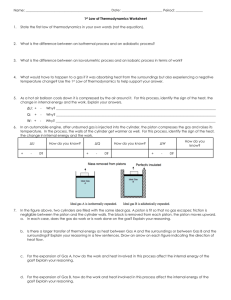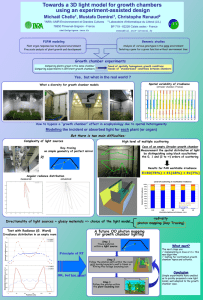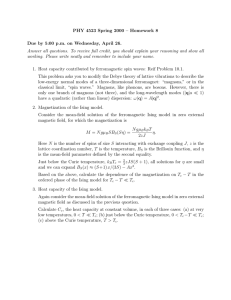Consider a one-dimensional classical gas of N particles in a length
advertisement
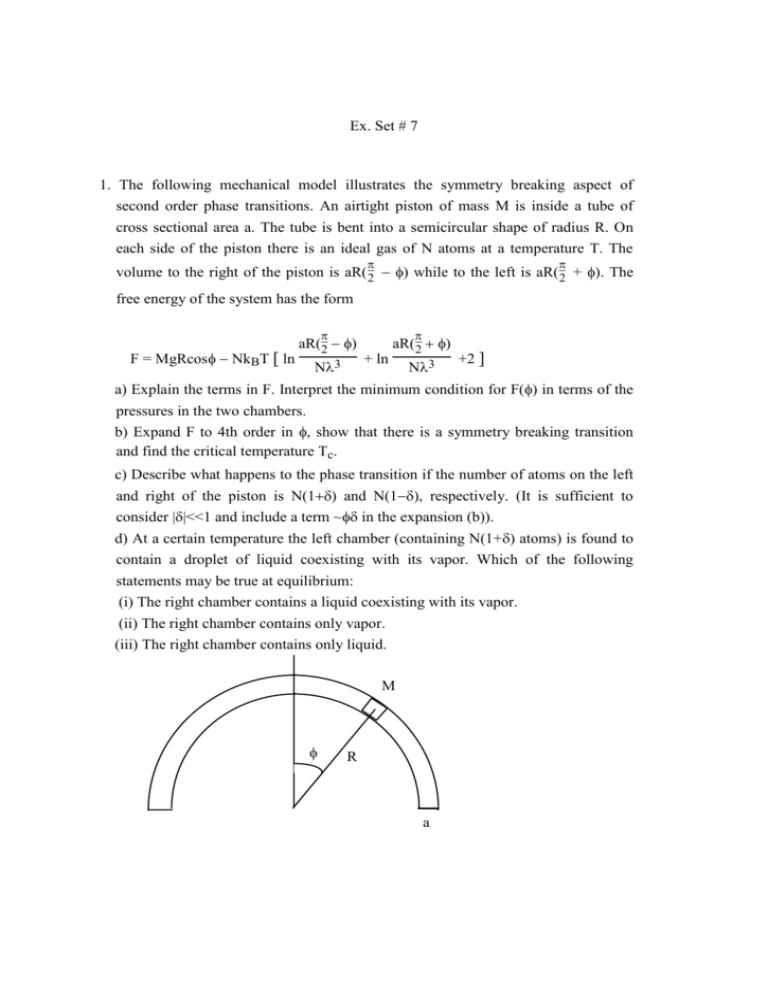
Ex. Set # 7
1. The following mechanical model illustrates the symmetry breaking aspect of
second order phase transitions. An airtight piston of mass M is inside a tube of
cross sectional area a. The tube is bent into a semicircular shape of radius R. On
each side of the piston there is an ideal gas of N atoms at a temperature T. The
volume to the right of the piston is aR( 2 ) while to the left is aR( 2 + ). The
free energy of the system has the form
F = MgRcos NkBT [ ln
aR(2 )
N3
+ ln
aR(2 )
N3
+2 ]
a) Explain the terms in F. Interpret the minimum condition for F() in terms of the
pressures in the two chambers.
b) Expand F to 4th order in , show that there is a symmetry breaking transition
and find the critical temperature Tc.
c) Describe what happens to the phase transition if the number of atoms on the left
and right of the piston is N(1) and N(1), respectively. (It is sufficient to
consider ||<<1 and include a term ~ in the expansion (b)).
d) At a certain temperature the left chamber (containing N(1+) atoms) is found to
contain a droplet of liquid coexisting with its vapor. Which of the following
statements may be true at equilibrium:
(i) The right chamber contains a liquid coexisting with its vapor.
(ii) The right chamber contains only vapor.
(iii) The right chamber contains only liquid.
M
R
a
2. Consider a one-dimensional classical gas of N particles in a length L at temperature
T. The particles have mass m and interact via a 2-body "hard sphere" interaction (xi
is the position of the i-th particle):
V(xixj) =
=0
|xixj|<a
|xixj|>a
a) Evaluate the exact free energy F(T,L,N).
b) Find the equation of state and identify the first virial coefficient; compare with its
direct definition.
c) Show that the energy is E=NkBT/2. Why is there no effect of the interactions on E?
d) In three dimensions V(|rirj|) is defined as above with r the position vector.
Explain why should the effective volume satisfy V>Veff>V-v0N where v0 is the
volume of each particle and Z=(Veff)N/λ3NN!. Find E(T) and explain how can it be
consistent with the presence of a phase transition.
3. Given an Ising model with long range interactions. The energy of a spin
configuration {Si}, i=1,2,…,N on any type of lattice and Si=1, is
1
H J Si S j
2 i, j
with J>0 and the sum is on all the lattice sites i,j (unlike the usual Ising model which
has a summation only on nearest neighbors).
a)
Evaluate
the
entropy
by
using
the
microcanonical
ensemble
1
(Note: H JM 2 where M= Si is the magnetization)
2
i
b)
Find M in terms of the temperature T. To have a proper thermodynamic
limit one needs to define J=J'/N where J' is N independent in the limit
N∞. Explain why.
c)
Find a critical temperature where M vanishes.
4. The boiling point of a certain liquid is 95 C at the top of a mountain and 105 C at
the bottom. Its latent heat is 1000 cal/mole. Calculate the height of the mountain.
(Assume that the gas phase is an ideal gas with density much lower than that of the
liquid; use the average mass of 30 gr/mole.).
